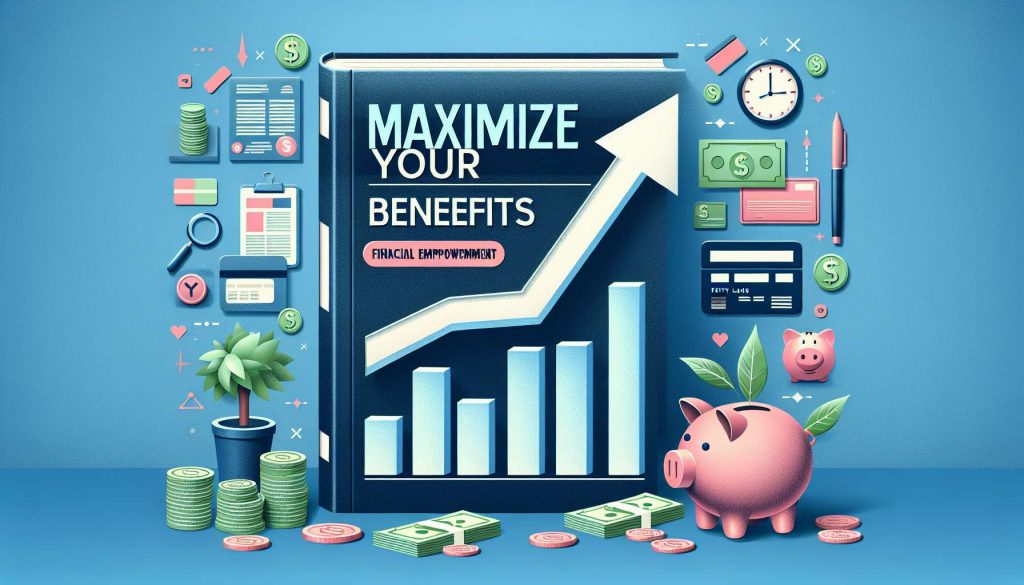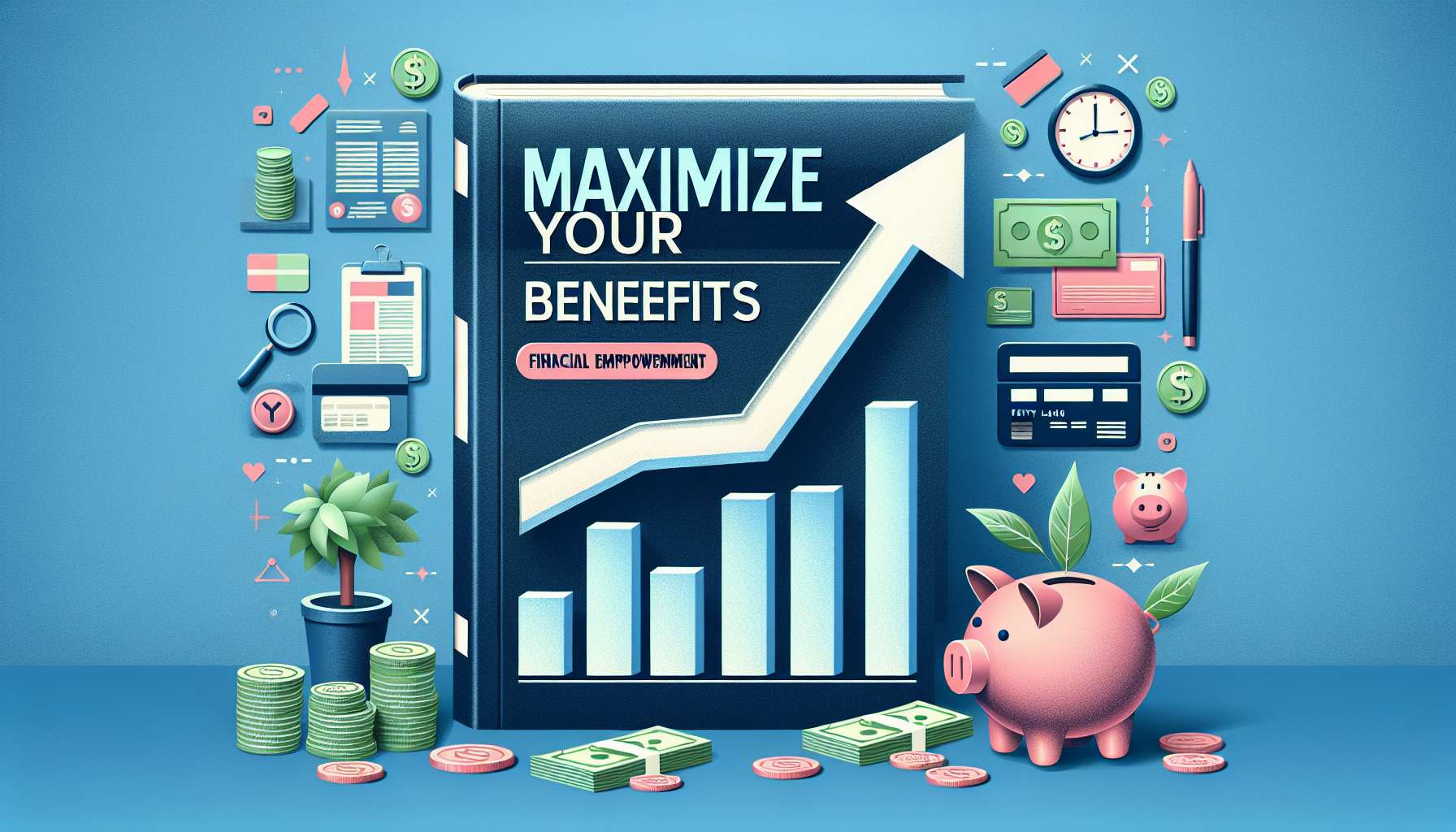Unlock Financial Freedom: A Practical Guide to Maximizing Benefits

Anúncios

In a world where financial stress is one of the most common challenges people face, the idea of financial freedom holds a universal appeal. It’s the dream of living life on your own terms — without being burdened by debt, paycheck-to-paycheck cycles, or constant worry about the next bill.
But achieving that level of independence doesn’t happen by luck or chance. It’s the result of strategic planning, disciplined habits, and informed decision-making. The good news is that anyone — regardless of income level or background — can take meaningful steps toward financial freedom by learning how to maximize the benefits available to them, whether through smart budgeting, investing, or leveraging financial tools effectively.
This comprehensive guide will walk you through the key strategies to unlock financial freedom, covering how to make the most of your income, savings, investments, and personal benefits to build lasting wealth and security.
1. Understanding Financial Freedom
Financial freedom means more than simply having money in the bank — it’s about achieving a state of financial stability where your assets, income, and passive earnings provide you with the ability to sustain your desired lifestyle.
It’s the point at which:
-
Your passive income covers your essential expenses.
-
You’re free from high-interest debt.
-
You have a safety net for emergencies.
-
You can make life decisions — career changes, travel, or retirement — without financial anxiety.
Reaching this stage requires both financial literacy and a long-term plan focused on growth, protection, and optimization.
2. Assessing Your Current Financial Situation
Before you can move forward, you need a clear picture of where you stand today.
a) Calculate Your Net Worth
Your net worth equals total assets minus total liabilities.
List all your assets (savings, investments, property, vehicles) and debts (credit cards, loans, mortgages). This gives you a snapshot of your financial health.
b) Analyze Your Cash Flow
Track your monthly income and expenses to identify spending leaks. Apps such as Mint, YNAB (You Need a Budget), or Empower can help automate tracking and categorize spending patterns.
c) Review Your Financial Habits
Ask yourself: Are you saving consistently? Do you pay bills on time? Are your investments aligned with your goals?
Self-awareness is the foundation of improvement.
3. Building a Strong Financial Foundation
Financial freedom starts with discipline and structure. The following steps form the backbone of a solid financial plan.
a) Create and Commit to a Budget
A budget is the ultimate tool for financial control. It tells your money where to go instead of wondering where it went.
Try the 50/30/20 rule:
-
50% for needs (housing, food, utilities)
-
30% for wants (entertainment, travel, dining)
-
20% for savings and debt repayment
Zero-based budgeting — allocating every dollar to a specific purpose — is another excellent method to ensure accountability and purpose in every expense.
b) Establish an Emergency Fund
Unexpected expenses are inevitable. Having an emergency fund covering three to six months of living costs shields you from financial setbacks, preventing the need for high-interest credit cards or loans.
c) Eliminate High-Interest Debt
Debt erodes your capacity to build wealth. Prioritize paying off high-interest debt first, especially credit cards.
You can use:
-
The Debt Avalanche Method — focusing on highest interest rates first to save money.
-
The Debt Snowball Method — paying smallest balances first to gain motivation.
Becoming debt-free frees up cash flow to save, invest, and achieve long-term goals faster.
4. Maximizing Your Income Sources
Achieving financial freedom doesn’t rely solely on cutting expenses — it’s equally about increasing income streams.
a) Leverage Your Career
Negotiate raises, pursue promotions, or enhance your qualifications. Professional development often offers one of the best returns on investment.
b) Start a Side Hustle
Freelancing, e-commerce, digital content creation, or consulting can add supplementary income. Even modest side income, when consistently invested, can compound significantly over time.
c) Build Passive Income
The ultimate goal is to have money working for you. Consider:
-
Dividend-paying stocks.
-
Rental property or REITs (Real Estate Investment Trusts).
-
Royalties from books, online courses, or creative work.
The earlier you begin cultivating passive income, the sooner you can reach true independence.
5. Smart Saving and Investing: Making Your Money Grow
Saving alone won’t make you wealthy — investing wisely is essential for compounding growth.
a) Differentiate Saving from Investing
-
Saving: Short-term, low-risk storage of funds (emergency fund, upcoming expenses).
-
Investing: Long-term, higher-risk growth through assets such as stocks, bonds, and mutual funds.
b) Start Early and Be Consistent
Even small, regular investments benefit from compound interest — earning returns on both your principal and accumulated earnings.
Example: Investing $200 per month at 8% annual return for 30 years results in nearly $270,000, far exceeding what you could save in a standard bank account.
c) Diversify Your Portfolio
Spread your investments across different asset classes — equities, bonds, real estate, and cash equivalents. Diversification reduces risk and ensures that poor performance in one area doesn’t derail your entire portfolio.
d) Use Tax-Advantaged Accounts
If available in your country, take advantage of tax-efficient vehicles such as:
-
401(k) or IRA (U.S.)
-
ISAs (U.K.)
-
RRSPs (Canada)
These accounts allow your investments to grow tax-free or tax-deferred, accelerating wealth accumulation.
6. Protecting What You Build: Insurance and Risk Management
A crucial yet often overlooked part of financial freedom is protection. Safeguard your wealth and income through the right insurance and planning.
a) Health and Life Insurance
Medical emergencies or loss of income can derail even the best-planned finances. Health and life insurance provide essential security for you and your family.
b) Property and Liability Coverage
Protect your assets from damage, theft, or legal disputes. Adequate coverage ensures that unforeseen events don’t wipe out years of progress.
c) Estate Planning
A will, trust, or power of attorney guarantees that your assets are managed according to your wishes. Estate planning is not only for the wealthy — it’s for anyone who wants to secure their loved ones’ futures.
7. Leveraging Benefits and Financial Tools
Many people overlook opportunities to maximize benefits that can accelerate their path to financial freedom.
a) Employer Benefits
If your employer offers matching retirement contributions or stock purchase programs, always take full advantage — it’s essentially free money.
b) Credit Card Rewards
Used responsibly, rewards cards can yield significant perks such as cashback, travel points, or discounts. The key is to pay the balance in full each month to avoid interest charges.
c) Government Incentives
Research available programs — from tax deductions to homeownership subsidies or green-energy credits. These benefits can reduce expenses and free up funds for investing or saving.
d) Automated Tools
Modern technology offers apps that automatically round up purchases for savings, track your investments, or rebalance portfolios. Automation eliminates human error and builds consistent wealth habits.
8. Cultivating the Right Financial Mindset
Financial freedom isn’t just a numbers game — it’s also a matter of mindset and discipline.
a) Adopt an Abundance Mindset
Instead of focusing on scarcity (“I can’t afford this”), shift your thinking to growth (“How can I afford this?”). This mental shift fosters creativity and problem-solving.
b) Practice Delayed Gratification
Learning to prioritize long-term rewards over short-term indulgence is a hallmark of successful wealth builders.
c) Stay Educated
The financial landscape changes constantly — new regulations, technologies, and opportunities emerge. Continual learning through books, podcasts, or online courses keeps you ahead of the curve.
d) Surround Yourself with Positive Influences
Engage with financially responsible peers or mentors. Environment plays a huge role in reinforcing good habits and avoiding self-sabotage.
9. Long-Term Financial Planning: Building for the Future
Financial freedom isn’t achieved overnight — it’s a journey that requires long-term vision and adaptability.
a) Set Clear Milestones
Define what financial freedom looks like for you. It may include debt elimination, home ownership, or a specific net-worth target.
Break these into smaller, measurable goals — quarterly or yearly benchmarks to keep yourself accountable.
b) Review and Adjust Regularly
Life changes: incomes grow, families expand, and priorities shift. Revisit your financial plan annually to ensure it still aligns with your current circumstances and goals.
c) Prepare for Retirement Early
The earlier you start saving for retirement, the less you’ll need to contribute later due to compounding growth. Take advantage of employer-sponsored plans and consider diversified investments to protect against inflation.
10. Common Pitfalls to Avoid on the Road to Freedom
Even with the best intentions, financial progress can stall if you fall into common traps:
-
Lifestyle inflation: Increasing spending as income rises.
-
Neglecting an emergency fund: Leaving yourself vulnerable to debt.
-
Ignoring investment diversification: Concentrating wealth in one area increases risk.
-
Failing to track progress: Without metrics, goals remain vague.
-
Emotional decision-making: Fear and greed are the enemies of financial discipline.
Awareness of these pitfalls helps you stay focused and resilient through market changes and personal challenges.
Conclusion: Your Journey to Financial Independence Begins Now
Financial freedom isn’t reserved for the wealthy — it’s attainable for anyone who commits to learning, planning, and executing with consistency.
By budgeting wisely, eliminating debt, investing strategically, and maximizing available benefits, you create a financial system that works for you — not against you. Over time, these deliberate choices compound, turning small victories into lasting wealth and independence.
The path to financial freedom begins with a single step: taking responsibility for your financial future. Start today — track your spending, automate your savings, and learn how to make every dollar serve a purpose.
Remember, financial freedom isn’t just about having more money — it’s about having more control, confidence, and choices in life.





